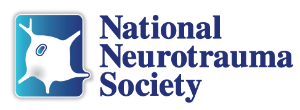Main Menu
Description & Objectives S11
S11: Nanomaterial Promotion of Regeneration in Spinal Cord Injury






Chair: Sarah Stabenfeldt, PhD
S11.01 - Injectable Hydrogel Enables Local Sustained Delivery to Promote Repair After SCI
Molly Shoichet, PhD - University of Toronto
S11.02 - Magnetically Responsive Nanomaterial Drug Delivery Systems for Encouraging Axon Regeneration
DiAnna Hynds, PhD - Texas Women's University
S11.03 - Probing Neural Cells with Carbon Nanotubes: Implications for Translational Medicine
Vladimir Parpura, MD, PhD - University of Alabama at Birmingham
Session Description
Injury to the spinal cord presents several challenges to effective treatment of spinal cord injuries. Primary among these are difficulties in delivering therapeutics across the blood-brain or blood-spinal cord barrier, targeting therapies to particular subsets of neurons or glia, and continuously providing therapeutics over an extended period of time. Nanomaterial-based therapeutic systems are promising as several systems have been designed to meet these challenges. This session will highlight several different approaches whereby nanomaterial-based systems provide pharmacological or structural support therapies for treating spinal cord injuries. In particular, speakers will discuss polymeric hydrogel delivery of therapeutics at the site of injury; magnetically-responsive nanoparticle drug delivery systems targeted to affected cell populations (e.g. corticospinal tract neurons) and derivatized single-walled carbon nanotube modulation of astrocyte function.
Learning Objectives
At the conclusion of this session, attendees will be able to:
1. Appreciate the complexity of developing effective, targeted therapies to encourage axon regeneration in the central nervous system;
2. Discuss different nanomaterial-based treatments for spinal cord injury;
3. Understand the challenges that remain in developing effective nanomaterial-based treatments to improve functional outcomes in spinal cord injury.
